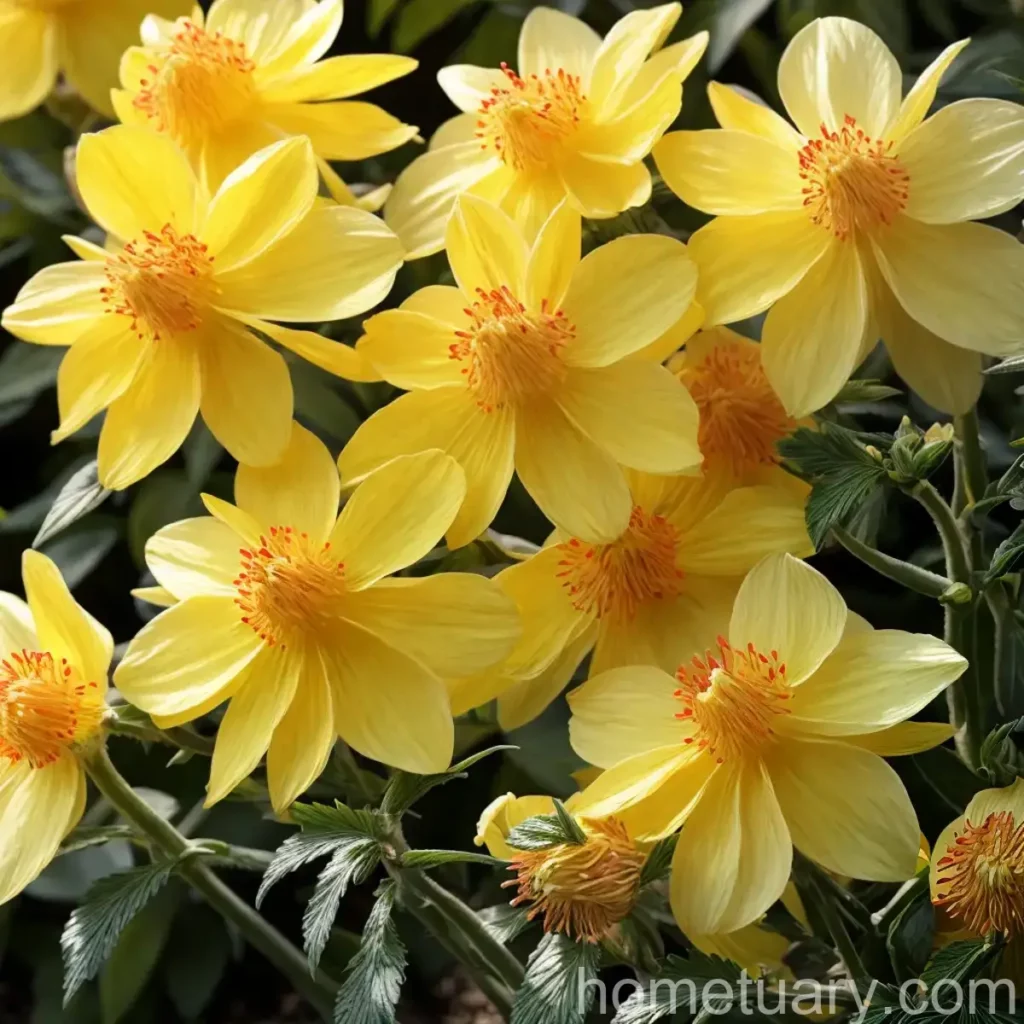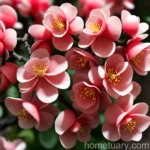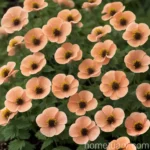All About Japanese Kerria (Kerria japonica ‘Golden Guinea’)
Plants play a crucial role in our daily lives, providing us with food, oxygen, medicine, and beauty. One such plant that stands out for its ornamental value is the Japanese Kerria (Kerria japonica ‘Golden Guinea’). In this comprehensive guide, we will delve into the various aspects of this exquisite plant, including its culture, uses, care requirements, and more. Whether you’re a seasoned gardener or just starting out, there’s something for everyone to learn about this stunning shrub.
What is the Japanese Kerria (Kerria japonica ‘Golden Guinea’)
The Japanese Kerria, scientifically known as Kerria japonica ‘Golden Guinea’, is a deciduous shrub that belongs to the Rosaceae family. This plant is native to Asia, specifically China and Japan, and is widely cultivated for its beautiful golden-yellow flowers that adorn its branches in spring. It is a popular choice for gardens and landscapes due to its vibrant blossoms and ability to thrive in various environmental conditions.
Key Takeaways – Japanese Kerria (Kerria japonica ‘Golden Guinea’)
Before we delve deeper into the specifics of the Japanese Kerria, let’s go through the key takeaways about this remarkable plant:
- Scientific Name: Kerria japonica ‘Golden Guinea’
- Common Name: Japanese Kerria
- Cultivar: ‘Golden Guinea’
- Plant Type: Deciduous shrub
- Flower Color: Golden-yellow
- Uses: Ornamental, landscaping
- Hardiness Zone: USDA zones 4-9
- Mature Height: 3-6 feet
- Mature Spread: 4-6 feet
Now that we have an overview of the Japanese Kerria, let’s explore its culture, uses, and care requirements in detail.
Culture of Japanese Kerria (Kerria japonica ‘Golden Guinea’)
Understanding the cultural requirements of the Japanese Kerria is essential for ensuring its optimal growth and flowering. From water needs to sunlight preferences, each aspect contributes to the overall health and appearance of the plant.
Water
Japanese Kerria plants generally have moderate water needs. They prefer consistently moist soil but can tolerate short periods of drought once established. When watering, it’s important to ensure that the soil is well-draining to prevent waterlogging, which can lead to root rot. During dry spells, especially in the summer, providing supplemental watering can help the plant thrive and maintain its vibrant blooms.
Sunlight
When it comes to sunlight, Japanese Kerria ‘Golden Guinea’ prefers partial shade to full sun. While it can tolerate some shade, providing it with at least 4-6 hours of direct sunlight daily is ideal for promoting abundant flowering and vigorous growth. In regions with hot summers, partial shade during the hottest part of the day can prevent the plant from wilting and maintain its lush green foliage.
Soil
The Japanese Kerria thrives in well-draining, slightly acidic to neutral soil. It can adapt to various soil types, including loamy, sandy, or clay soils, as long as they are not waterlogged. Amending the soil with organic matter, such as compost or well-rotted manure, can improve its structure and fertility, providing an ideal growing medium for the plant.
Fertilizer
Fertilizing Japanese Kerria ‘Golden Guinea’ can help support its growth and flowering. Applying a balanced, slow-release fertilizer in early spring, just before new growth begins, can provide the plant with essential nutrients. It’s important not to over-fertilize, as excessive nutrients can lead to lush foliage at the expense of flowers. Following the recommended dosage on the fertilizer label and avoiding direct contact between the fertilizer and the plant’s stems and foliage is essential for preventing fertilizer burn.
Pruning
Pruning is an important aspect of Japanese Kerria care, as it helps maintain the plant’s shape, promote flowering, and remove dead or diseased wood. The best time to prune Japanese Kerria ‘Golden Guinea’ is right after the blooming period, typically in late spring or early summer. This allows the plant to set buds for the following year’s flowers. When pruning, it’s advisable to remove the oldest, woodiest stems at ground level to encourage new growth and a healthier, more compact form. Regular deadheading of spent flowers can also prolong the blooming period and improve the overall appearance of the plant.
Propagation
Propagation of Japanese Kerria ‘Golden Guinea’ can be achieved through various methods, including:
- Softwood Cuttings: Softwood cuttings taken in early summer can be rooted in a well-draining potting mix to produce new plants.
- Division: Dividing established clumps of Japanese Kerria in early spring can create new plants and rejuvenate older ones.
- Layering: Air layering or simple layering can be employed to encourage new roots to form on the plant’s stems, which can then be separated and potted up.
Each propagation method has its own set of requirements and best practices, ensuring the successful propagation of this ornamental shrub.
Container Popularity
While Japanese Kerria ‘Golden Guinea’ is commonly grown in garden beds and borders, it also exhibits exceptional performance when cultivated in containers. Its compact growth habit and vibrant flowers make it an ideal candidate for container gardening, allowing it to grace patios, balconies, and other outdoor spaces with its charm. When growing Japanese Kerria in containers, it’s essential to ensure proper drainage and to select a container that provides ample room for the plant’s roots to spread and grow.
Common Diseases and Pest Management
Like all plants, Japanese Kerria ‘Golden Guinea’ is susceptible to certain diseases and pests. Understanding these potential issues and employing preventative measures can help maintain the plant’s health and vigor.
Disease Diagnosis
Some common diseases that may affect Japanese Kerria include:
- Powdery Mildew: A fungal disease that manifests as a powdery, white coating on the leaves.
- Leaf Spot: Characterized by dark spots on the foliage, often caused by fungal pathogens.
- Root Rot: A consequence of waterlogged soil, leading to rotting of the plant’s roots and subsequent decline.
Regular monitoring of the plant’s foliage, particularly during humid or wet conditions, can aid in early disease detection and prompt intervention.
Common Pests
Japanese Kerria ‘Golden Guinea’ may attract certain pests, including:
- Aphids: Small, sap-sucking insects that can distort new growth and excrete honeydew, leading to sooty mold development.
- Scale Insects: These pests appear as small, raised bumps on the plant’s stems and leaves, sucking the plant’s sap and weakening its overall growth.
Employing cultural practices, such as promoting a healthy growing environment and maintaining good air circulation, can help mitigate pest infestations. Additionally, applying horticultural oils or insecticidal soaps as per the manufacturer’s instructions can effectively manage pest populations while minimizing harm to beneficial insects.
Botanist’s Tips
From a botanist’s perspective, Japanese Kerria ‘Golden Guinea’ offers several unique characteristics that make it a remarkable addition to gardens and landscapes:
- The plant’s vibrant golden-yellow flowers provide a splash of color in early spring, brightening up the garden after the winter months.
- Its arching stems and graceful, green foliage create a beautiful backdrop for other plants.
- Japanese Kerria is relatively low-maintenance once established, making it an ideal choice for novice gardeners and those seeking a fuss-free yet visually appealing plant.
Fun Facts
As we explore the world of Japanese Kerria ‘Golden Guinea’, here are a few fun facts about this delightful shrub:
- The Japanese Kerria is named after William Kerr, a Scottish gardener who worked for the Royal Botanic Gardens at Kew in the late 18th century.
- The cultivar ‘Golden Guinea’ is prized for its particularly abundant and showy yellow flowers.
- Japanese Kerria is used in traditional medicine in certain parts of Asia for its purported medicinal properties, although it is primarily grown for its ornamental value.
Now that we’ve covered the various aspects of Japanese Kerria ‘Golden Guinea’, it’s time to explore additional resources and expert insights to further enhance our understanding of this captivating plant.
Links to External Resources
To deepen your knowledge and appreciation of Japanese Kerria ‘Golden Guinea’, consider exploring the following external resources:
- The Royal Horticultural Society (RHS): The RHS provides detailed information on the cultivation and uses of Japanese Kerria, including insights from horticultural experts.
- Missouri Botanical Garden: The Missouri Botanical Garden offers a comprehensive overview of the Japanese Kerria, covering its botanical characteristics and recommended growing conditions.
- University of Florida IFAS Extension: This resource delves into the cultivation and maintenance of Japanese Kerria, providing valuable guidance for gardeners and landscaping professionals.
These resources can serve as valuable references for enthusiasts, gardeners, and horticulturalists seeking in-depth knowledge about Japanese Kerria ‘Golden Guinea’.
In conclusion, Japanese Kerria (Kerria japonica ‘Golden Guinea’) stands out as an exceptional ornamental shrub with its dazzling golden-yellow flowers, adaptable nature, and low-maintenance requirements. Whether planted in a garden bed, landscape border, or a decorative container, this delightful shrub adds a touch of elegance to outdoor spaces and beckons with its radiant blooms each spring. By understanding the plant’s cultural needs, care requirements, and ornamental value, enthusiasts can appreciate and cultivate Japanese Kerria ‘Golden Guinea’ with confidence, ushering in the joy of spring with its vibrant blossoms year after year.















